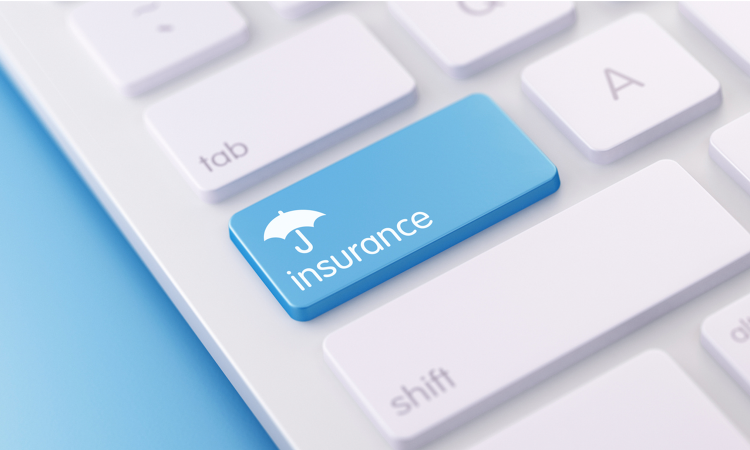April 2024
By Stephen Mason, Canada Brokerlink
Market conditions beginning to soften, insurers are becoming more open to negotiation with respect to renewal and new business terms. Now, this is a generalization, as certain classes of business or loss heavy accounts will still see continued rate increases.
What’s fueling the market softening? It is the uncertainty in the economy, with interest rate hikes attempting to lower inflation. It reduces the quantum of economic activity to insure – sales are down, less assets are being purchased, businesses are closing. This takes insurance premiums off the system. This also stirs competition as the insurers start competing for a piece of a smaller pie. The premium increases due to inflation works right into your property and liability limits. As the market has corrected for inflation, this additional quantum of premium is slowing down.
In short, competition between insurers is slowly returning, this is good news.
Hot topics in insurance:
Climate Change:
Anytime there is a weather event that accumulates a large number of claims, the insurers call it a CAT loss. The IBC defines a CAT loss as an event that causes more than $ 30 million in claims. At the end of each year, they add up all the CAT losses and track the change over time. This number continues to rise. If you look back to the period of time from 1983- 2000, the yearly average of CAT losses is $ 440 million. From 2001 to 2010 the yearly average was $ 675 million and from 2011 to 2020 the average is $ 2.3 Billion annually. These cat losses hit the reinsurance companies, those are the insurers that protect the excess levels of the primary insurance companies, and of course they charge a rate. As the rate goes up, it is passed onto the consumer. Basically, reinsurance costs are increasing as they deal with the CAT losses from climate change. But, having said all this, despite the claims activity, the industry knows how to underwrite and price the exposures.
Auto Theft
Automobile theft is front and center in news, it’s an Epidemic costing billions of dollars. I want to put this in perspective from the insurance point of view, Canadians paid $83.2 Billion in insurance premiums last year, insurance companies paid out $42 billion in claims. Auto theft accounts for $ 1.2 billion. So, from a pure economic point of view, its bad but the insurers are rating for it and they are prescribing measures to control the loss ratios. The issue is that it’s a very visible problem. Vehicles are stolen from driveways, people are being assaulted to steal vehicles, which has become quite political. It’s a hot topic. So where does the problem lie? Simply stated, organized crime is called this because they are organized, and take advantage of the lack of coordination between all the jurisdictions and domestic and international authorities involved. While organized crime has no jurisdiction, and the penalties aren’t as severe as they should be. Bottom line, stolen vehicles are an international currency, and efforts need to focus on the recovery of the units as the of the thieves they will always find a way to steal a car. So the problem continues, hopefully the coordination and funding will help slow down the crime, but purely from the Insurance companies prospective, they know how to underwrite the problem.
Cyber Crime
Cyber claims continue, claims experience has leveled off, but its an exposure every small business has. Pretty much all Cyber claims are caused by user error. Somebody clicks yes when they should delete. Highly recommend you ask your broker for pricing.
Employment Practice liability
As society becomes more litigious, harassment and wrongful dismissal claims are an exposure and are costing employers tens of thousands of dollars in legal fees and settlements. Employment Practice liability, which used to be offered through Directors and Officers coverage, is now common coverage on a standalone form. Ask your broker about the coverage.
General Liability and Pollution Liability
General Liability and Pollution Liability limits cover your exposure for causing bodily injury and property damage, so think about what type of premises your employees are working at, what’s the cost to replace a fuel system at a retail site, or the property damage and down time that can be caused through your operations from servicing generating systems. Is $1,000,000, $2,000,000, or even $5,000,000 enough? Again, another area to consider with respect to your insurance program.
Older posts:
David Mason, B.Comm., FCIP, CRM
Canada Brokerlink
This past March, I had the opportunity to speak at the OPCA Annual General Meeting and what trends and topics are currently affecting the industry.
Let’s talk about post-Covid issues and insurance industry trends that are affecting your insurance policies:
This annual insurance presentation usually focuses on market cycle of insurance rates. The insurance industry is capitalistic, it’s fueled by profit, we go through soft market pricing stages as well as hard market pricing stages, all driven by the return on investment, the complete market cycle lasts twelve to fifteen years. Currently, our industry remains in the tail end of a hard market, although rate increases continue, conditions have seemed to stabilize. It’s an odd hard market compared to others because it’s in the third year, while at the same time, insurance companies have experienced very high earnings for the past 2 years. In 2021, on average insurer’s returns were in excess of 15 cents on the dollar, with the same results occurring for the first nine months of 2022. The annual 2022 results will be coming out over the next month or so.
What’s prolonging the hard market and adding to your insurance cost?
- Labour supply
- Supply chain
- Inflation
- Cyber insurance
- Climate change
- Merger and acquisition
- Underwriting process
- Automobile theft
So how do all these factors affect the insurance program this year?
With respect to the program, we currently have the same list of carriers on the General Liability, Contractors Pollution Liability, Fleet and Property policies.
For 2023 the General Liability Carrier is looking for 5% rate increase, this has been tempered from the double digit increases from previous years. Although they’ve taken rate increases and made coverage corrections over the last couple of years, they still prove to have a competitive offering. Working on Fuel handling systems has traditionally been a difficult operation to insure, it’s been no different regardless of the stage of the market cycle we are in.
Contractor Pollution Liability has essentially remained with the same carrier since 2003, we’ve had some cases where we’ve utilized other markets, based on individual needs. We are always nervous about moving between carriers for pollution as the underground gradual fuel leaks sometimes go undetected for years, it’s best to have the same carrier on risk throughout.
Fleet insurance has had a tough go over the last three years, companies remain very selective on inexperienced drivers, couple that with the labour shortage, it has really caused strain on contractors trying to hire drivers with verifiable insurance history. For 2023 we are actively marketing the fleets individually, not so much as the entire portfolio.
So for any contractors out there who operate vehicles with a gross vehicle weight of 4,500 Kgs or over, you are required by the ministry of transportation to register your business with a Commercial Vehicle Operators Registration number. This registration number contains a history of your fleet’s collisions, convictions, vehicle’s condition and audit results, this information is all readily available in the form of a Level 2 CVOR report. The report is your 2-year rolling safety score and historical record of how your fleet operates. Two key indicators on this report are your Overall Violation Rate as a percentage and your Safety Rating as a category. Categories include excellent, satisfactory, satisfactory-no audit, conditional and unsatisfactory. Your level 2 CVOR report is the most important assessment tool for a fleet underwriter.
Take a look at your level 2 CVOR report, specifically overall violation rate. If your percent is 35% or over, fleet underwriters will decline to quote your fleet, if this percentage wanders up to 70%, there’s a good chance you’ll be getting warning letters from the ministry with the potential to downgrade your Safety rating. If your run with a conditional CVOR, a fleet underwriter will decline to quote your insurance, if your CVOR safety rating downgrades from satisfactory to conditional, your current insurer will probably take heavy rate increase based on the fact that all the other markets will decline quoting. A clean CVOR will directly affect the terms and conditions of your fleet policy, with a 2-year rolling report that changes monthly. There are tips and trick’s out there that can help keep your fleet rates in line.



